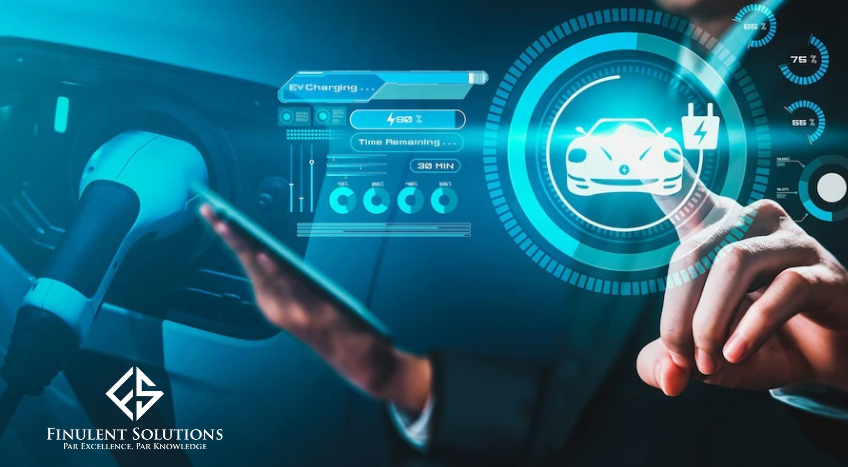With petrol and diesel prices on the surge, electric vehicles (EVs) are gaining more popularity. All EVs produce much lower tailpipe emissions compared to their counterparts, which means they are better for the environment. Smart and fast charging, connected cars, etc, are just a few of the many innovations that have sped up the adoption of electric vehicles.
However, despite this, electric vehicles are not yet a global phenomenon. The sales in developing countries are much slower given the initial high cost of electric vehicles. Additionally, in these countries, there is a lack of charging infrastructure which is another obstacle to not going electric.
It’s only a matter of time before these obstacles will be faced by fewer countries as the demand for electric vehicles is increasing each year. According to the International Energy Agency (IEA), globally, over 120,000 electric cars were sold each week in the year 2021 (in the year 2012, 120,000 electric cars were sold worldwide). Around 2 million cars were sold in the first quarter of 2022 which was a 75% increase from the same period in 2021.
4 Reasons why electric vehicles will shape the future
1. Rise in electric vehicle production technology

With increased demand, comes the increased need for supply and companies can grab onto this opportunity. In Europe, battery electric vehicles (BEVs) will account for 16% of car sales by 2025, which could increase up to 50% by 2030. Data presented by AugustaFreePress shows that electric car sales are expected to rise by 20% YoY.
This gives businesses the chance to work not just on improving their designs and cars but also work on sales and after-sales services. As the demand for EVs rises, production must get quicker and more efficient.
The prices will reduce in line with economies of scale and further technological advancements. Businesses must not neglect original equipment manufacturers (OEM) to support mass adoption at lower prices.
2. Increasing electric vehicle charging stations (EVCS)
One important aspect people who are considering buying an EV take into account is the easy accessibility of EV charging points. Many factors play a role when mapping charging points at various locations, such as different types of connectors, acceptance of different amounts of power, etc.
There are 3 levels of charging, with level 3 being DC Fast Charging. The higher the level of charging the faster the charging process will be. Since the car determines the power it accepts, EV owners do not need to fret about plugging their car into a higher-level charger.
Additionally, the increase in demand for EVs will encourage more EVCS. EVCS installation is expected to increase from 2,115 thousand units in 2020 to 30,758 thousand units in 2027 resulting in a CAGR of 46% during this period.
3. Generating electricity at home

Solar panels placed on top of houses can provide energy that will significantly lower the cost of not only electricity but also the kilometer cost of EVs by charging the EV battery. Depending on the location, wind turbines or a hybrid of solar power and wind energy can be used. However, it’s essential to get them professionally installed to ensure safety and optimum usage.
As daunting as this process may seem, once consumers understand which solar designs best suit their house, it can make the process easier.
4. Sustainability
Let’s address the elephant in the room – electric vehicles can help reduce the damage caused to the environment. With lower tailpipe emissions, EVs can reduce countries’ carbon emissions which in turn will reduce pollution. One electric car on average can save 1.5 million grams of CO2.
Final Words

The potential future for electric vehicles is vast. According to IEA, the energy density for BEVs has been rising from 100-150 Wh/kg a decade ago to some reaching over 300 Wh/kg now.
There will be stricter regulations from the EU and the US to reduce petrol engine vehicles. Some believe that EVs will power themselves by collecting energy from the environment and will require very little maintenance.
Finally, countries like the USA, China, and some European countries have taken initiatives such as incentives, tax reimbursements, preferential policies, etc. which will further aid in the promotion of EVs in the future.
Our Verdict
| Electric Vehicles (EVs) | Internal Combustion Engine Vehicles (ICEVs) | Winner |
| EVs do not emit any greenhouse gases which means they don’t negatively impact the environment. | ICEVs emit greenhouse gases that are harmful to the environment. | EV |
| The system of power transmission is electrical and mechanical in EVs. | The system of power transmission from source to load in an ICEV is mechanical. | EV |
| EVs have low maintenance and running costs. | ICEVs have high maintenance and running costs. | EV |
| EVs take around 0.5 – 8 hours to charge. | ICEVS takes around 5 minutes or less to fill. | ICEV |
| EVs operate noise free. | ICEVs produce more noise. | EV |
| The initial purchasing cost for EVs is high. | The initial purchasing cost for ICEV can be average. | ICEV |
| EVs produce maximum torque instantly. | ICEV takes time to pick up maximum speed. | EV |
| EV batteries can be charged at home and at various charging points. | Petrol in ICEV can only be filled at gas stations. | EV |
Learn about EV charging, Solar Designing, and more by getting in touch with us.

